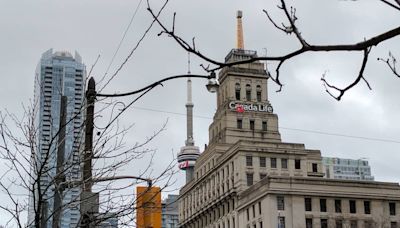Search results
Canada covers 9,984,670 km 2 (3,855,100 sq mi) and a panoply of various geoclimatic regions, of which there are seven main regions. Canada also encompasses vast maritime terrain, with the world's longest coastline of 243,042 kilometres (151,019 mi). The physical geography of Canada is widely varied.
Canada has ten provinces and three territories that are sub-national administrative divisions under the jurisdiction of the Canadian Constitution.
Flag and Arms of Canada. Canada is a country in North America. Its ten provinces and three territories extend from the Atlantic Ocean to the Pacific Ocean and northward into the Arctic Ocean, making it the world's second-largest country by total area, with the world's longest coastline.
Jan 4, 2012 · Canada came into its own in 1791 when the Constitutional Act (or Canada Act) divided the Province of Quebec, then considerably enlarged, into the provinces of Upper Canada and Lower Canada. In 1841 they were joined to form the Province of Canada .
In 2021, the population density of Canada was 4.2 people per square kilometre. The historical growth of Canada's population is complex and has been influenced in many different ways, such as Indigenous populations, expansion of territory, and human migration.
From Wikipedia, the free encyclopedia. The history of Canada covers the period from the arrival of the Paleo-Indians to North America thousands of years ago to the present day. The lands encompassing present-day Canada have been inhabited for millennia by Indigenous peoples, with distinct trade networks, spiritual beliefs, and styles of social ...
The culture of Canada embodies the artistic, culinary, literary, humour, musical, political and social elements that are representative of Canadians. Throughout Canada's history, its culture has been influenced firstly by its indigenous cultures, and later by European culture and traditions, mostly by the British and French.




